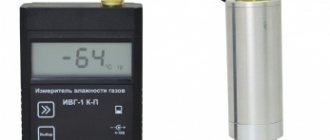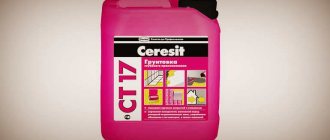In terms of practicality and cost, liquid fuel boilers are somewhere between solid fuel and gas. They still require space to store fuel and tanks for it, and are still not completely autonomous due to the need for regular maintenance. At the same time, liquid fuel boilers do not require a large number of documents and, on average, have a higher efficiency than their gas counterparts.
However, liquid fuel boilers are chosen mainly due to the availability of a stable source for purchasing this fuel at a lower price. In the article we will look at liquid fuel options, what their consumption is, how economically profitable they are and where to get them, and also give an example of the most successful boiler models.
Types of liquid fuel for boilers
In domestic conditions, in more than 80% of cases, diesel fuel (diesel fuel) is used as liquid fuel. Accordingly, it is burned by universal gas-diesel boilers or specialized diesel boiler units. In addition to wholesale purchases, you can find diesel fuel at a lower price from agricultural enterprises, tractor drivers, truck or bus drivers.
In almost all instructions for boiler units, the manufacturer indicates fuel requirements; for 2021, the standard is fuel with a viscosity of up to 6 mm2/s at 20°C. In Europe, this is a common fuel for heating private houses under the marking EL DIN 51603; in Russia, its closest analogue is the Euro-4 standard.
From the instructions for De Dietrich NeOvo EcoNox liquid fuel.
It is easiest to determine the approximate consumption of diesel fuel by a boiler, since it is known that 1 liter of Euro-4 fuel, when burned in a modern boiler with an efficiency of 90-95%, produces 1 kW of thermal energy (+-5%). As a result, the consumption of diesel fuel by the boiler = Nominal power of the boiler (kW) / 10 is the hourly consumption when operating at maximum power; in practice, the boiler is active for an average of 1/3 of the day.
For example, with a power of 24 kW, the maximum consumption is 24/10 = 2.4 l/h. In practice, this will be about 0.8 l/h - this is the most accurate generalized calculation method. Calculate the real indicator without individual initial data such as the degree of insulation of the house, temperature requirements, weather conditions, fuel quality, etc. impossible. However, it will differ slightly from the theoretical one.
Less common diesel alternatives are:
- Used oil . Much cheaper, but almost equally calorific fuel. It can be purchased for a completely symbolic price from service stations and auto repair shops, agricultural enterprises, any type of vehicle fleets, factories, and railway depots. However, the initial cost of household boilers that burn waste is extremely high (usually from 100 and even 150 thousand rubles), and due to the low environmental friendliness of the raw materials, the boilers require regular maintenance.
- Fuel oil . A more expensive analogue of mining, fuel oil of the M100 and M40 grades is most often used as fuel for heating. It is burned in heating boilers running on waste oil; it is not economically justified on a domestic scale.
- Light heating oil . Similar to diesel fuel, but since heating oil is not used in cars, requirements such as cloud point, cetane number, etc. are not observed during its production. In view of this, the price for it is on average 5% lower - 43-46 thousand rubles / ton, when diesel fuel is 45-49 thousand rubles / ton.
- Kerosene . Boilers capable of burning it are extremely rare; usually these are models that run on waste and fuel oil. It has only 5-8% higher calorific value, but costs on average 75-95 thousand rubles/t.
- Rapeseed oil . An alternative to diesel fuel, several times cheaper in cost. However, there are very few diesel boilers running on rapeseed oil, and it is extremely difficult to obtain raw materials, unless you own a rapeseed field.
Selection of fuel storage containers
Organization of the boiler room space with a plastic container for storing fuel indoors.
To store liquid fuel, even with a boiler of the lowest power, special containers are needed. They can be made of steel, stainless steel or aluminum, but today plastic is most often used - durable, lightweight and resistant to temperature changes on average from -50°C to +50°C. According to SNiP, in the boiler room it is permissible to place a container with a volume of up to 0.8 m3 (800 l), at a distance of more than 1 m from the burner. If the volume is larger, the tank must be placed behind a blank wall or outside.
When storing outdoors, it is worth considering the need for an additional pump; the characteristics of the standard pump are usually indicated in the instructions, and you should rely on them. Also, the external part of the pipeline must be insulated in accordance with the type of fuel used. For example, the viscosity of diesel fuel changes significantly at +5°C and below, and fuel oil solidifies on average at +10°C.
It is advisable to store fuel for no more than a year, and it is most profitable to stock up for the entire heating season, so for the first time you need to calculate the approximate consumption for the entire season. Further, the amount of fuel consumed will be known thanks to the practice of the past heating season.
Coal
Coal is a popular raw material for heating heating appliances. The material is being improved.
Advantages:
- high level of heat transfer;
- efficiency;
- Coal is not picky in storage, there is no need to equip a place for fuel reserves;
- raw materials are convenient to transport due to compact packaging;
- To install a coal-fired boiler, you do not need to obtain permission.
The advantages indicate the cost-effectiveness and efficiency of the material.
Coal-fired boilers require periodic cleaning of the chimney and heat exchanger. Soot and soot settle on internal surfaces. If you do not regularly clean the equipment, the efficiency of the unit is significantly reduced.
Design and principle of operation
Liquid fuel boilers are both single-circuit and double-circuit, but exclusively energy-dependent models, the operation of which requires a connection to the electrical network. In fact, liquid fuel models differ from gas models only in the burner, which is adapted to the characteristics of a particular type of fuel and is equipped with a turbocharger necessary to spray the fuel throughout the combustion chamber. Any type of liquid fuel requires preheating, which is also carried out in the burner, all this makes it so massive and large-sized.
The rest of the operating principle is standard:
- Fuel from the reservoir is supplied to the burner heating chamber, then atomized using a nozzle and ignited in the combustion chamber.
- Above the combustion chamber there is a heat exchanger, which heats up and transfers thermal energy to the coolant located inside (often all the walls of the combustion chamber are a heat exchanger).
- The coolant (usually water) circulates through the system giving off heat to the heating radiators.
There are also models with a different structure and operating principle; we have already described them in a more detailed analysis of diesel boilers and boiler units that burn waste oil:
All the details you need to know about diesel boilers for heating a private home
All the details you need to know about waste oil boilers for a private home
Introduction
When choosing what type of turnkey boiler room to install in production, the main attention is paid to the choice of energy carrier on which the heat generator will operate. Currently, the energy market is represented by such components as liquid and solid fuels, natural gas and, finally, electricity. It must be taken into account that in each of the types there is a division into subtypes that have their own advantages and disadvantages inherent only to them.
Solid fuels include fossil fuels based on carbon. These are: all types of coal and oil shale, wood and wood processing waste, as well as peat. In addition, recycled household waste is currently used for combustion in boiler systems. The energy value of fuel depends on its chemical composition. Solid fuel for boiler houses is also divided depending on the method of its processing into natural and enriched. The first group includes: various types of coal, wood and its waste, peat and straw pellets. Peat and coal are sedimentary rocks formed from organic compounds under the influence of geological processes.
Liquid fuel is a flammable liquid of varying degrees of viscosity, obtained from the distillation of crude oil and used for combustion in the furnaces of boiler plants. This fuel for boiler houses also differs in characteristics such as ash content, percentage of sulfur content, viscosity and specific gravity. Synthetic substances also fall into this category.
Gaseous fuels can be natural or synthetic. Its composition is a mixture of gases that may contain water vapor, as well as resins and dust particles. Gas volume is measured in cubic meters. It differs in the percentage of gas itself to impurities. The most common type of fuel in this category is natural gas.
Reviews of household liquid fuel boilers: advantages and disadvantages
| Advantages | Flaws |
| Reliability - liquid fuel boilers, especially if they are expensive European models, are durable and trouble-free | The use is not always justified in economic terms. Diesel models have high fuel costs, and used oil models themselves are extremely expensive. To obtain benefits, you need to comply with many conventions. |
| Operating costs – almost any type of fuel can be obtained at a fairly low cost, especially used oil | Energy dependence - due to forced-air burners, all liquid fuel models require connection to the electrical network |
| Autonomy - after starting and setting up the boilers practically do not require human intervention throughout the entire season | The operation of burners and boilers in general is quite noisy, but the owners note that the noise is not audible even behind the thin walls of the boiler room |
| Availability of both single-circuit and double-circuit models | The need for good ventilation, according to reviews from the owners - forced, natural - does not relieve the room from the constant smell of fuel |
| Almost all models are equipped with a standard list of protection systems | |
| No permission required for connection and installation |
Pellets
This type of fuel is usually used in long-burning boilers. Such equipment has a special design that ensures almost complete combustion of pellets, without even the formation of ash. Sometimes the stoker in a solid fuel boiler room is responsible for supplying combustible pellets. But in some cases, such installations may use automatic loading. Such systems make the equipment much more convenient to use.
Also recently, modern, easy-to-use modular solid fuel boiler houses have become very popular. Using pellets for their operation is also an almost ideal solution.
Minimum required power
An accurate calculation of the boiler's heating output is carried out by a heating engineer based on SNiP 2.04.01-85. However, in domestic conditions, for an average uninsulated or weakly insulated house with a masonry of 2 bricks and a ceiling height of 2.7 m, the minimum required power is calculated from the rule of 1 kW per 10 m2, we also recommend laying a 20% reserve.
For example, for the house described above with an area of 150 m2, the minimum required power of an oil-fuel boiler will be (150/10) * 1.2 = 18 kW.
Pellet types
There are several types of such fuel on the modern market. Industrial pellets are gray-brown in color and have a high ash content. This fuel is mainly suitable only for industrial boilers. Using it in domestic water heating installations can lead to damage to the latter.
Agropellets are obtained from agricultural waste. The percentage of their ash content is also quite high. Such fuel is usually used only at large thermal power plants.
White pellets are made from debarked wood. Their ash content is only 0.5%. The color of such pellets is light yellow. They are quite expensive. However, it is white pellets that are usually used in household solid fuel boilers.
The best known manufacturers and models: characteristics and prices
Kiturami Turbo 13R
The most common and one of the best liquid fuel boilers for heating a private home in the budget price category. This is a diesel double-circuit model, the primary heat exchanger is steel, the secondary (for hot water supply) is copper. The fuel consumption of the 13 kW model is 1.97 kg/hour (2.25 l/hour), quite average, but sufficient. In general, the model is characterized by the minimum required set of components and the minimum required operating efficiency, due to which it is possible to maintain one of the lowest prices on the market.
At the same time, the boiler is known for its reliability and trouble-free operation. Separately, it is worth noting the functionality; for this price, the basic package includes a room thermostat - an extremely useful device that affects not only comfort, but also savings. There are all the minimum necessary protective systems and auto-diagnostics. Available in 13, 17, 21 and 30 kW versions.
Ferroli ATLAS 32
Universal Italian boiler with replaceable burner (diesel gas). Known for its high reliability, cast iron heat exchanger and efficiency of 94.3%. Users like to note the extremely quiet operation of an oil-fired boiler. There is protection against overheating and freezing, it is possible to connect an external thermostat, but it is not included with the boiler.
The only drawback is the lack of low-power models. Available in versions with heating outputs of 32, 47, 62, 78 and 95 kW. Please note that it is usually sold without a burner, which must be purchased separately. Diesel fuel – SUN G burner, gas – SUN M burner.
ACV N3
Another universal gas-diesel model made in Belgium. A diesel burner here also needs to be purchased separately; burners BMR 31, BMV 1FV, BMV 2FV can be installed on this model. Unlike the previous Ferroli, here the heat exchanger is made of furnace steel, however, based on the experience of other models, even steel heat exchangers from ACV have never had any questions, as with all boilers in general. The manufacturer is known for the practicality and absolutely trouble-free boiler units. However, the price is corresponding, in our opinion, too high; if the budget is strictly limited, this model is not the best choice.
There are protections against overheating, lack of traction, low-temperature corrosion, there is a connector for external control, but the thermostat itself is not included in the basic configuration. The body is thermally insulated; owners note the low noise level of the burners.
NORTEC B70 (WB 40)
Domestic model that burns waste oil. Despite the low cost for boilers of this type, the amount is still significant and will only pay off when used in a large private house (from 300-400 m2) with permanent residence; purchasing such equipment for a summer residence with temporary residence is irrational. In addition to mining, it is capable of burning fuel oil, heating oil and even crude oil. The 40 kW model consumes up to 4 l/hour of fuel.
From the factory, the boiler is already equipped with all the necessary components of the fuel unit - a transfer pump, a disposable fuel filter and a fuel intake. Equipment of this type uses extremely wear-resistant and durable materials that do not raise questions about reliability. In this model, the automation is equipped with the minimum necessary functionality: a basic set of protection systems and the ability to set the temperature in the system. Due to its simplicity, there are also no problems with it.
Cost: 146,000-175,000 rubles.
Quality Standards
According to foreign standards, all fuel for boilers is divided into two categories:
- stove (distillate);
- residual (fuel oil).
The first is produced by catalytic and thermal cracking of petroleum products and coking of residual fuel. About 60 percent of it is used to heat various buildings with autonomous heating systems. In the USA it is also called a nozzle, in France - light, in the UK - household. However, it is incorrect to call heating oil diesel. The fact is that it is several times heavier than diesel fuel (in terms of fractional composition). But both are suitable for heat supply. Based on GOST 305/82, diesel fuel is divided into:
- A(arctic);
- W (winter);
- L (summer).
In addition, the sulfur content is taken into account. All this information is displayed in the brand designation. In addition, the pour point and flash point are also important. For example, summer fuel is marked as L / 0.2 / 40, where the first number is the volume of sulfur, the second is the ignition temperature. And the encoding 3/0.2/35 indicates that this is an earthly fuel with a sulfur content of 0.2 percent and a freezing point of minus 35 degrees. The Arctic brand of diesel fuel is the most frost-resistant. It is designated as A / 0.4 / 50. The basic difference between all these brands of fuel for liquid fuel boilers is low viscosity. Even at plus 20 degrees it reaches from 3 to 6 cSt. As for the presence of sulfur, in recent years the foreign market has preferred boiler fuel with a content of this substance within 0.005 percent by weight. It costs more, but is much better in terms of completeness and cleanliness of combustion. In addition, it is also ideal for condensing boilers, since there is no longer any need to neutralize the condensate. As a result, such diesel fuel provides boiler equipment with such important qualities as:
- harmlessness of emissions into the environment;
- reducing the cost of servicing the heating device and the system as a whole;
- fuel economy.
Prices: summary table
| Model | Available power, kW | Number of circuits | Efficiency, % | Cost, rub. |
| Kiturami Turbo 13R | 13, 17, 21, 30 | double-circuit | 86 | 43 000 |
| Ferroli ATLAS 32 | 32, 47, 62, 78, 95 | single-circuit | 64,3 | 63 000 |
| ACV N3 | 16, 25, 30, 51 | single-circuit | 90 | 93 000 |
| NORTEC B70 (WB 40) | 40, 59, 147, 197 | single-circuit | — | 159 000 |
DieselLiquid fuel BoilersWaste oil
Safe Operation
Liquid fuel boilers are considered high-risk objects. Improper operation of such units not only leads to a violation of thermal conditions, but can cause a boiler explosion or create a fire. Persons over 18 years of age who are certified to know the rules of safe operation are allowed to operate industrial liquid fuel units.
In domestic furnaces installed in residential buildings, the owner of such housing construction bears responsibility for safe operation. Therefore, he is obliged to follow all factory instructions for operating the installed boiler. This applies to the procedures for turning on, turning off, setting the operating mode and operating the fuel facility.
The manufacturer specifies the frequency and types of maintenance work for the unit. It is usually carried out annually before the unit is put into operation. This includes cleaning the external and internal surfaces of the boiler and smoke ventilation systems. Checking the condition of convective heating surfaces, pipelines, shut-off and control valves and primary sensors of the safety system.
What to look for when choosing
When choosing a liquid fuel unit, in addition to the thermal power, which must provide all the heat losses of the building and the load on the hot water supply, it is important to pay attention to the types of acceptable fuel.
It is necessary that, according to GOST, it corresponds to the one that the owner plans to use and which is available in sufficient quantities in the area of residence to eliminate high transportation costs.
Liquid fuel heating devices work with a fuel system; it is important that the automation unit is consistent with its operation. For example, if in an emergency the heating boiler suddenly turns off, after the shut-off valve is cut off, the fuel must be returned back to the storage container.
Typically, the fuel system is not included in the delivery of the unit, so you will have to install it yourself. Some models are equipped with a fuel heater in front of the injector; attention must also be paid to this in order to take into account the fuel parameters at the outlet of the fuel supply system.










